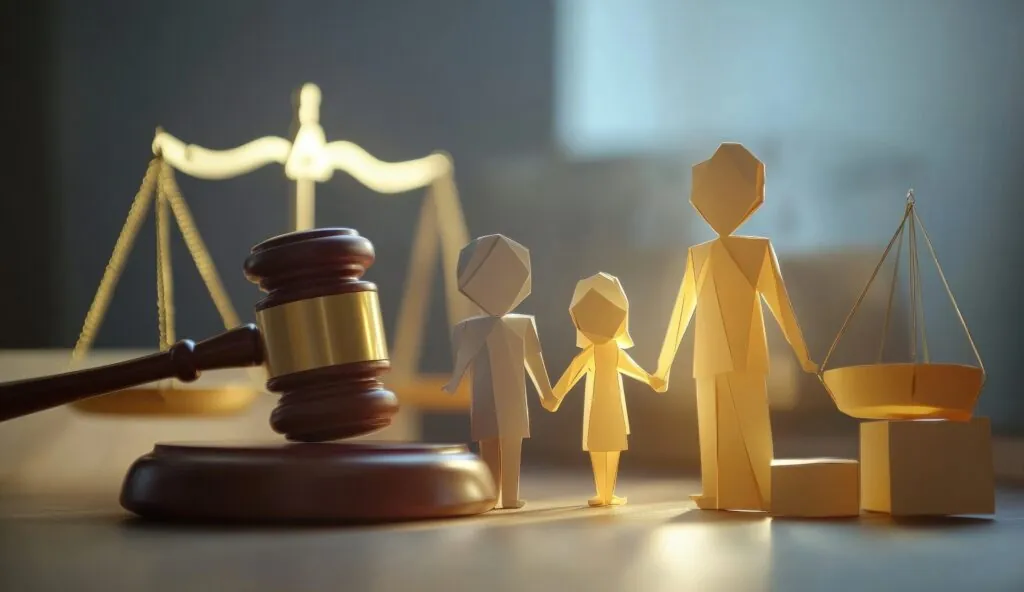When a child suffers a catastrophic injury—whether from a car accident, medical error, or defective product—the trauma affects the entire family. Parents must make decisions not only about urgent medical care but also about their child’s long-term future. In these situations, the legal system may appoint a guardian ad litem (GAL) to serve as a neutral, court-approved advocate for the injured child.
The GAL is tasked with protecting the child’s legal rights, particularly during litigation involving high-stakes settlements or lifetime care decisions. This article explains the purpose, process, and value of appointing a GAL in child injury lawsuits—and why it may be one of the most important parts of a child’s legal recovery.
What Is a Guardian ad Litem?
A guardian ad litem is a court-appointed individual whose job is to represent the best interests of a child during legal proceedings. The GAL does not act as a parent or assume custody. Instead, their role is focused entirely on litigation—ensuring the child’s voice is heard and their needs are not overlooked in the legal process.
The Legal Meaning of “Ad Litem”
The term “ad litem” means “for the lawsuit.” It signals that the GAL’s involvement is limited to the specific legal matter at hand, such as a personal injury lawsuit, and is not permanent or parental in nature.
How a Guardian ad Litem Is Appointed
A GAL is appointed by a judge. This may happen automatically in some jurisdictions, or the court may do so based on a motion from one of the attorneys involved in the case. The need for a GAL typically arises when:
- The child is a minor involved in a lawsuit
- A significant financial settlement is on the table
- The injury involves long-term or permanent impairment
- There may be a conflict of interest between the child and the parent or guardian
Once appointed, the GAL acts independently from both parties and reports directly to the court.
What Does a GAL Do in a Personal Injury Case?
The GAL’s responsibilities are broad, but all revolve around one central mission: protecting the best interests of the child throughout the litigation process.
Reviewing the Child’s Injury and Prognosis
The GAL begins by reviewing all medical reports, therapy notes, and long-term prognoses related to the child’s condition. This includes meeting with doctors, psychologists, therapists, and in some cases, educational specialists to understand how the injury will affect the child’s life moving forward.
Evaluating the Proposed Settlement
A critical function of the GAL is to assess whether the financial settlement or award being proposed is adequate. This includes evaluating whether the funds:
- Cover future medical care and therapy
- Account for loss of earning potential
- Provide for special education, home modifications, or mobility devices
- Are structured in a way that protects public benefit eligibility
If a settlement is deemed insufficient, the GAL can recommend changes or formally object.
Preparing a Court Report
The GAL presents a detailed report to the judge, outlining their findings, analysis, and recommendations. This report is heavily weighted in court and is often a deciding factor in whether the judge approves the settlement or requests modifications.
Legal Guardians vs. Guardians ad Litem
It’s important to distinguish between a legal guardian and a guardian ad litem. These roles are very different and serve separate functions.
Role of a Legal Guardian
A legal guardian makes decisions about the child’s everyday life, including education, healthcare, and living arrangements. They are often a parent or relative and may be appointed long-term by the court.
Role of a Guardian ad Litem
A GAL, on the other hand, is temporary and case-specific. They do not have physical custody and are involved solely to ensure the child’s legal rights are protected in the lawsuit. They are not influenced by parental interests, attorney negotiations, or financial pressure.
When Is a GAL Most Commonly Appointed?
While any child involved in litigation may be assigned a GAL, they are most commonly appointed in catastrophic injury cases. These include:
- Traumatic brain injuries (TBI) from accidents or falls
- Spinal cord injuries leading to paralysis
- Severe burns requiring multiple surgeries or skin grafts
- Amputations or long-term disability
- Medical malpractice involving lifelong treatment
In these scenarios, the legal and medical consequences are significant, and courts often require additional oversight to protect the child’s future.
What Does “Best Interests of the Child” Mean?
The GAL’s recommendations are based on a legal principle called the best interests standard. This standard requires that any legal decision involving a minor must prioritize the child’s:
- Physical safety
- Emotional stability
- Financial future
- Long-term care needs
In practical terms, this means the GAL might advocate for funding to support a child’s therapy, ensure a structured settlement to avoid financial mismanagement, or push for medical consultations the parties may have overlooked.
Real-Life Scenarios That Show the GAL's Impact
Consider a case where a child was left paralyzed from the waist down in a motor vehicle accident. A proposed $3.5 million settlement was offered in a lump sum. The GAL reviewed the child’s care plan and objected, warning that the lump sum could jeopardize future care if spent too quickly. The court approved a revised settlement that included structured payouts, a special needs trust, and earmarked funds for home modifications and a motorized wheelchair.
In another case, a toddler sustained severe burns from a defective household toy. The GAL ensured that future surgeries, therapy, and pain management were considered in the settlement—issues that had initially been undervalued by both legal teams.
These examples highlight how a GAL’s intervention can dramatically shift a settlement’s structure to better support the child’s real, long-term needs.
Can the GAL’s Opinion Be Challenged?
Parents or legal representatives may disagree with the GAL’s recommendations. However, they cannot override the GAL’s report. It is submitted to the judge, who will make a final determination. Judges give strong weight to a GAL’s opinion, especially in high-value or high-risk cases.
Who Pays for the Guardian ad Litem?
GAL services are usually paid from the child’s injury settlement. However, in some cases—particularly when families are indigent—the court may cover these fees or require the defendant to contribute. GAL costs are typically considered a necessary part of ensuring fair and ethical legal representation for a minor.
Is a GAL Required in Every Child Injury Case?
No, a GAL is not required in every case. In smaller claims or minor injuries where the settlement amount is limited and there’s no dispute over care, courts may forgo the appointment. However, in any catastrophic or life-altering injury case involving a child, the presence of a GAL is almost always expected and encouraged.
Key Takeaways for Parents and Caregivers
For parents involved in a personal injury lawsuit on behalf of their child, it is important to understand that the GAL is not there to challenge your decisions—but to make sure your child’s future is secure. They are not adversaries, but partners in ensuring the best legal and practical outcomes.
Parents should work openly with the GAL, provide all necessary documentation, and be receptive to their suggestions. A collaborative relationship will help produce a result that reflects both love and legal responsibility.
Frequently Asked Questions About Guardians ad Litem in Child Injury Lawsuits
What is a guardian ad litem, and how is it different from a legal guardian?
A guardian ad litem, often abbreviated as GAL, is a person appointed by the court to represent the best interests of a child during a legal proceeding. This role is temporary and specific to the case at hand, typically a personal injury lawsuit involving a minor. Unlike a legal guardian who has day-to-day custodial and decision-making responsibilities over the child, a GAL does not have custody and does not make parenting decisions. Instead, their duty is to provide the court with an impartial assessment of what outcome in the legal case would best serve the child’s physical, emotional, and financial needs.
Who appoints the guardian ad litem in a personal injury case?
The guardian ad litem is appointed by the judge presiding over the case. In many jurisdictions, the appointment is mandatory in cases involving minors where the injury is serious and the legal or financial stakes are high. In other cases, the appointment may be requested by one of the parties involved or ordered by the court when there are concerns about potential conflicts of interest or the adequacy of a proposed settlement.
Is a GAL always required in a child injury lawsuit?
A GAL is not always required in every case involving a child. Courts may waive the appointment in minor injury claims with modest settlement amounts, particularly if the parents or guardians are seen as adequately representing the child’s interests. However, when a child has suffered a catastrophic injury—such as a traumatic brain injury, spinal cord damage, or severe burns—a GAL is typically appointed due to the complexity and long-term impact of the case.
Can parents choose or reject the GAL?
Parents generally do not choose the GAL. The court selects someone based on their qualifications, experience, and perceived neutrality. While parents may express concerns if they believe the GAL is unfit or biased, the final decision remains with the judge. Likewise, if parents disagree with the GAL’s findings or recommendations, they can raise their objections through legal counsel, but they cannot dismiss or overrule the GAL on their own.
What authority does a GAL have during the case?
A GAL does not have legal custody of the child but does have authority to conduct interviews, review medical records, and make formal recommendations to the court. Their primary responsibility is to investigate all relevant information surrounding the injury and proposed settlement and submit a report that reflects what would best serve the child's long-term well-being. Judges rely heavily on these reports when making decisions about approving settlements or ordering changes to proposed terms.
Contact Fulginiti Law Today
When a child is seriously injured, the recovery journey is long, complex, and often painful. While doctors work to heal the body, the legal system must work to protect the child’s future—and that’s where the guardian ad litem plays a crucial role.
By conducting independent assessments, advocating for the child’s needs, and providing unbiased reports to the court, GALs add a layer of ethical oversight that ensures settlements and decisions are truly just.
If your child is involved in a lawsuit for a catastrophic injury, consult with an experienced child injury attorney who understands the GAL process. A lawyer familiar with pediatric personal injury cases can help you navigate court requirements, structure appropriate compensation, and work with the GAL to secure the best possible outcome.
Your child’s future deserves protection. Don’t go through it alone. Contact Fulginiti Law today for a free consultation.



